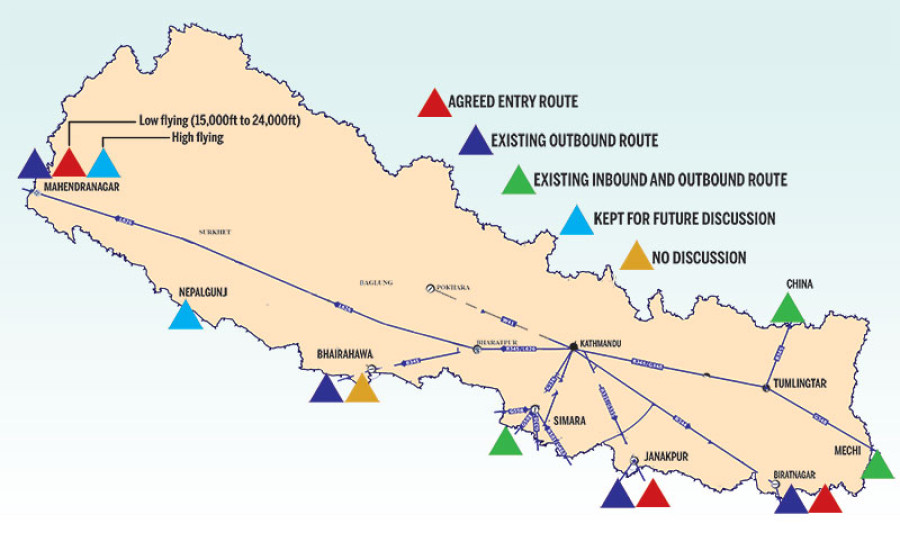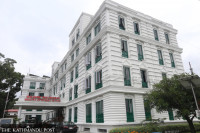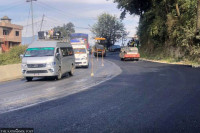National
Nepal to get 4 new air gateways
India has agreed to open four new air entry points to Nepal in the eastern and western parts of the country to facilitate movement of international traffic, but two “vital entry points” are still on hold.
Sangam Prasain
India has agreed to open four new air entry points to Nepal in the eastern and western parts of the country to facilitate movement of international traffic, but two “vital entry points” are still on hold.
The four routes that India agreed to make bidirectional or two-way are Kathmandu-Biratnagar-Dhaka, Kathmandu-Janakpur-Kolkata and Kathmandu-Janakpur-Patna in the eastern part of Nepal and Kathmandu-Mahendranagar-Delhi (L626) in the west.
However, India agreed to provide entry on the L626 route for low level flights only, or aircraft flying at the heights between 15,000ft and 24,000ft. The move is aimed at facilitating the plan of Buddha Air and other Nepali private carriers to connect New Delhi, India from Nepalgunj.
A technical team from the Civil Aviation Authority of Nepal (Caan) and the Airport Authority of India (AAI) signed an initial accord on Saturday to jointly conduct safety assessment of these agreed routes.
“Discussion on two vital entry points remained on hold, but overall the agreement is in fact a significant breakthrough,” said Rajan Pokhrel, deputy director general of Caan.
Nepal’s agenda for the technical panel discussion included bidirectional routes or entry or exit points from Janakpur in the eastern, Nepalgunj in the mid-western and Mahendranagar in the far-western regions.
“As per Nepal’s request for entry from the L626 route for high-level flights or flights above 24,000ft and another entry point from Nepalgunj, India agreed to make further examination by September 2018,” said Pokhrel. The upcoming international airports in Bhairahawa and Pokhara will not be financially and technically feasible unless India allows aircraft to enter Nepal over the Nepalgunj or Mahendranagar airspace.
According to Caan officials, discussion on the Nepalgunj airspace was purely a “defence issue”, the reason for visiting delegation’s reluctance to discuss it. The Indian side expressed reservations in the past over providing entry over Bhairahawa and Nepalgunj due to its defence establishment in Gorakhpur. A defence base is spread over huge swathes of land there, where fighter jet exercises are held regularly.
The routes that have been agreed are subject to detailed safety assessment before their use.
“After the safety assessment, the proposed routes have to be notified to the International Civil Aviation Organization (Icao) with consent from both sides. The Icao then issues the letter of agreement. A report is published in the aeronautical information publication (AIP) before the new air paths are operational,” said Pokhrel.
He said it would take at least a year for the routes to be operational. “However, for cross-border flight, it can be fast-tracked under mutual understanding.”
Cross-border airspace issues had been pending for the last five years. Nepal formally asked India to open the new cross-border air routes during Indian Prime Minister Narendra Modi’s visit to Kathmandu in 2014. Nepal had been pushing the agenda of new routes for the last nine years, as there exists a single entry point in Simara for most of the airlines flying to the country. In contrast, there are seven exit points for aircraft flying out of Nepal: Bhairahawa and Mahendranagar in the west, and Simara, Biratnagar, Tumlingtar, Kakarbhitta and Janakpur in the east.
Besides Simara, two other entry points over Mechi and Tumlingtar (over Everest) have been specifically designated for flights coming from Bhutan and Lhasa, respectively. The Simara entry point is used by a majority of aircraft flying to Nepal and is, therefore, congested most of the time.




 17.44°C Kathmandu
17.44°C Kathmandu









%20(1).jpg&w=300&height=200)





